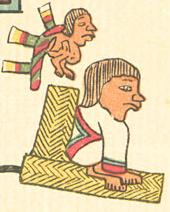Texcoco de Mora | |
|---|---|
City | |
 Part of the main plaza | |
| Coordinates: 19°30′32″N 98°52′55″W / 19.509°N 98.882°W | |
| Country | |
| State | State of Mexico |
| Municipality | Texcoco |
| Founded | 1551 (as Spanish city) |
| Municipality Created | 1919 |
| Government | |
| • Municipal President | Sandra Luz Falcón |
| Area | |
• City | 418.69 km2 (161.66 sq mi) |
| Elevation (of seat) | 2,250 m (7,380 ft) |
| Population (2005) Municipality | |
• City | 259,308 |
| • Seat | 259,260 |
| Time zone | UTC-6 (Central) |
| Postal code (of seat) | 56100 |
| Website | (in Spanish) Official site |


Texcoco de Mora (, Otomi: Antamäwädehe) is a city located in the State of Mexico, 25 km northeast of Mexico City.[1] Texcoco de Mora is the municipal seat of the municipality of Texcoco. In the pre-Hispanic era, this was a major Aztec city on the shores of Lake Texcoco. After the Conquest, the city was initially the second most important after Mexico City, but its importance faded over time, becoming more rural in character.[2] Over the colonial and post-independence periods, most of Lake Texcoco was drained and the city is no longer on the shore and much of the municipality is on lakebed.[1] Numerous Aztec archeological finds have been discovered here, including the 125 tonne stone statue of Chalchiuhtlicue, which was found near San Miguel Coatlinchán and now resides at the Museum of Anthropology in Mexico City.[3][4]
Much of Texcoco's recent history involves the clash of the populace with local, state and federal authorities. The most serious of these is the continued attempts to develop an airport here, which despite the saturation of the current Mexico City airport, is opposed by local residents.[5][6] The city and municipality is home to a number of archeological sites, such as the palace of Nezahualcoyotl, Texcotzingo (Baths of Nezahualcoyotl) and Huexotla. Other important sites include the Cathedral, the Juanino Monastery, and Chapingo Autonomous University. The most important annual festival is the Feria Internacional del Caballo (International Fair of the Horse), which showcases the area's mostly agricultural economic base.[2]
- ^ a b "Medio Fisico" [Physical features] (in Spanish). Texcoco, Mexico: Municipality of Texcoco. Archived from the original on 2012-06-29. Retrieved 2010-02-16.
- ^ a b "Enciclopedia de los Municipios de México Estado de Mexico Texcoco" (in Spanish). Mexico: INAFED. Archived from the original on September 30, 2007. Retrieved 2010-02-16.
- ^ Avalos, Leopoldo (2006-08-07). "Recuerdan partida de Tláloc" [Remembering the exit of Tlaloc]. Reforma (in Spanish). Mexico City. p. 19.
- ^ Hernandez, Erika (2003-08-31). "Hallan vestigios de los aztecas" [Vestiges of the Aztecs found]. Mural (in Spanish). Guadalajara, Mexico. p. 11.
- ^ Quadri de la Torre, Gabriel (2007-05-11). "Déjà vu, nuevo aeropuerto en Texcoco" [Déjà vu, new airport in Texcoco]. Economista (in Spanish). Mexico City.
- ^ Gomez, Ricardo (2008-01-21). "Avala Gamboa proyecto de aeropuerto en Texcoco" [Gamboa guarantees the airport project in Texcoco]. El Universal (in Spanish). Mexico City. Retrieved 2010-02-16.

